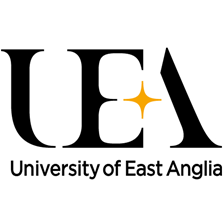
Writing and presenting reports for government: five dos and five don’ts
Academics are increasingly encouraged to engage with government policymakers. Many academic journals ask contributors to more clearly and comprehensively state the policy implications of their research; funding bodies allocate larger sums for work that has policy impact; and higher education institutions more clearly link staff progression and promotion to government policy engagement.
Many universities are facilitating this agenda by creating new roles for permanent staff to act as policy brokers. These individuals provide a bridge between academics and government by finding engagement opportunities and then managing the process from preparing proposals through to client management and billing. In 2018, the Universities Policy Engagement Network (UPEN) was launched. Now with more than 100 members, made up of two-thirds of UK universities, this community is committed to increasing the impact of research on policy and serves as an agent or contact point for national and international policymakers, bodies and thinktanks looking for evidence and experts.
- Resource collection: How to promote your research for greater impact
- Learning the craft of using your research to engage in policy
- Embedding equality, diversity and inclusion within public policy training for academics
The success of the impact agenda hinges on the principal “deliverables” that result from engagement, usually a report and related presentation. So, what are the key dos and don’ts when it comes to writing and presenting that final report for a government policy agent? Here are five of each, based on more than 25 years of experience.
Five dos
1. Do state at the outset what you will do and what your report and presentation will look like.
Provide examples of past work or the work of peers. Carefully listen to feedback at this time and ensure that you modify your plans accordingly. Following introductory meetings, confirm in writing your understanding of the deliverables and gain policy agent approval before proceeding. The biggest mistake that academics make in this area is producing work that, while good, is simply not what the policy agent was expecting.
2. Do spell out the implications of your work in your report
Do this in the executive summary, again in the main text as the implications arise, and once more in the conclusion. The implications are the “sun” around which everything else in your report’s solar system revolves. Repetition underlines their importance and ensures their absorption. Implications in the form of recommendations are valued most.
3. Do produce an agreed Gantt chart with the policy agent and do stick to that Gantt chart
A Gantt chart, for those unfamiliar with this term, is a project management tool that sets out planned actions against a schedule. Stating what you will do and when, and then demonstrating that you are on track by providing weekly progress reports are basic hygiene factors. Other fundamentals that you need to get right are keeping to a budget, ensuring meetings start and finish on time, and general professionalism throughout. An excellent piece of work will be severely diminished if late, a little over budget, or produced following a path not envisaged at the outset.
4. Do agree with your policy agent the division of labour within the team that you are working in
Chances are that the project will not be delivered by an individual but by a team. On traditional research projects, junior team members are often given stretching responsibilities such as drafting and presenting. This is done with the best of intentions as an important goal is the development of junior team members. Such an approach needs to be explained and agreed on policy projects. Your policy agent may prefer the project lead to take responsibility for producing the final draft of the report and to make the final presentation.
5. Do ensure that you leverage the work that you have done so that its impact on your career and your university’s reputation is maximised
The data that you have collected and analysed will be fresh and available for further or alternative analysis and so a reworking or extension can result in a journal paper or book. Attributing DOIs will help to track the impact of this output. The work that you have done will also help with research funding bids. These are often driven by national and international government interest and so it’s likely that there will be calls related to your completed work. Finally, think about opportunities to bring your work into your teaching. Your students will benefit from up-to-date findings in the subject area and your credibility as a lecturer will be strengthened. Of course, do run all these post-project intentions by your policy agent and provide assurance regarding confidentiality.
Five don’ts
1. Don’t follow conventional academic practice by including your research design, sample characteristics and statistical tests in the main text
Your readers will take the rigour of your research as a given. They will assume that your work is of high academic quality. No need to labour over this aspect of your work in the main text and cloud what your client is most interested in, which are the outcomes and implications of your research. Instead, put it in an appendix for reference.
2. Don’t comprehensively reference academic work in your report
Again, your policy agent will expect what you have done to be informed by the relevant literature, methodological or subject-based. However, references to relevant policy documents will be welcomed. Even here, exercise parsimony and ensure that these are either seminal or current. Facilitate easy access to these documents by providing weblinks in the list of references at the end of the report.
3. Don’t include too many slides in your presentation
If presenting for 20 to 30 minutes, 10 key slides are more than enough. The discipline of limiting the number of slides will ensure that you focus on what’s most important and ensure that you don’t lose your audience. The idea is not to present everything in your report (that’s what the report is for), it’s to underline the key points and generate interest in reading the report, as well as providing a good basis for the Q&A session that follows the presentation. Make sure that your presentation has a clear agenda and story line. Rehearse it and keep to the allocated time.
4. Don’t lose your impartiality
Over the course of a project, you may be drawn into or “captured” by your policy agent’s agenda. The policy agent may have views that are not supported by your findings or may wish to ignore difficult or controversial findings. As your relationship builds, it is tempting to sympathise and accommodate these biases. That is a mistake. Remember, you were commissioned in the first place because academic work is highly respected for its impartiality and validity. Compromise these and your work will not have the impact that you are seeking.
5. Don’t think that what you are doing is peripheral.
Engaging with government policy is increasingly becoming central to an academic’s work portfolio. Recall that “impact” accounted for a fifth of the Research Excellence Framework 2014 and rose to a quarter of REF 2021. That means that a four-star impact case study has the same value as between seven and 10 four-star outputs. The weight allocated to impact may rise again in the next REF.
Conducting work for policy agents is an extremely rewarding activity. Even more so now that the REF has thrown its weight behind it. It reinforces other more traditional activities and can contribute to a rich and varied academic career that makes even more of a difference.
Naresh Pandit is professor of international business in Norwich Business School at the University of East Anglia and a member of the Universities Policy Engagement Network (UPEN).
If you would like advice and insight from academics and university staff delivered direct to your inbox each week, sign up for the Campus newsletter.
Additional Links
For more advice and insight related to this topic, see our spotlight guide From the lab to life: how to demonstrate research excellence.




